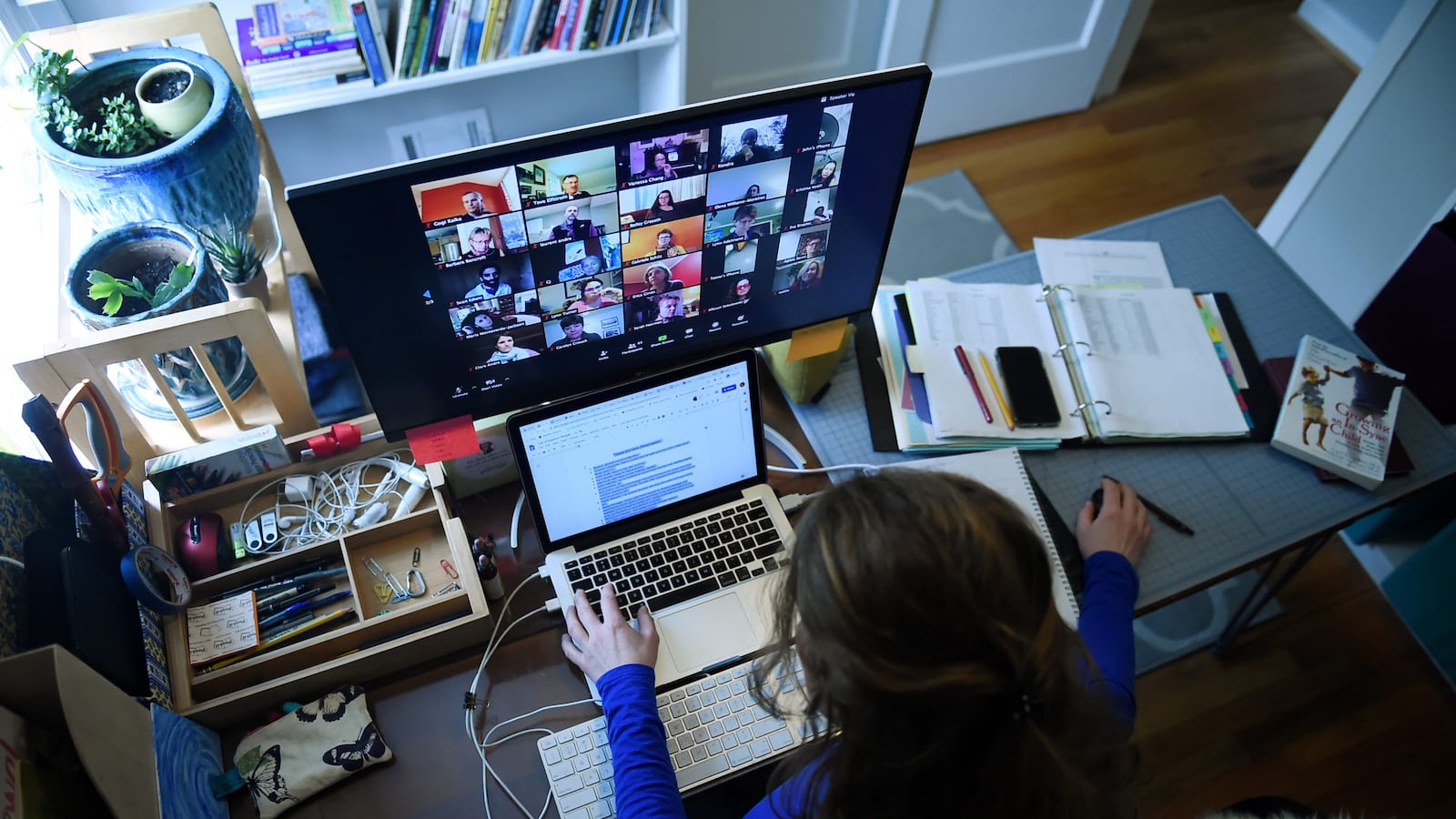After Newark classrooms went dark last month, educators across the city took to Zoom. Now, just as students and teachers are getting the hang of virtual lessons, it appears Zoom classrooms will go dark, too.
The district notified instructional staffers on Tuesday that it is adopting a different video conferencing tool, called Webex, for virtual meetings and classes. Unlike Zoom, which was blocked by the district-issued laptops that thousands of Newark students now rely on at home, Webex will be accessible on all devices, according to the email sent to staffers. The email did not refer directly to Zoom, but several school employees said they have been told to stop using that platform and start using Webex.
The district’s decision follows a massive surge in the popularity of Zoom among teachers, students, and millions of other quarantined people looking to connect virtually during the coronavirus pandemic — but also a spike in privacy and security concerns about Zoom that has prompted several large school districts, including New York City, to abandon the free tool.
Newark’s shift away from Zoom comes as a disappointment for educators such as Michael Dixon, a math coach at Ivy Hill Elementary, who quickly signed up for the service last month after school buildings statewide were ordered to close. Before long, Dixon was teaching three lessons a day on Zoom, covering material in the work packets the district sent home with students.
At the start of a fifth-grade class on Friday, Dixon began by reviewing his Zoom rules: Dress appropriately (no pajamas), sit at a desk or table (no lounging in bed), and keep your camera on and the microphone muted. Then he launched into a lesson on ordered pairs and numerical patterns, writing notes on a whiteboard in his living room while some 35 students followed along from home. Later, the students split off into virtual breakout sessions led by other educators.
“It’s pretty much the same thing they’d do in the school building,” Dixon said after class. “We’re just doing it virtually.”
Now, Dixon, his students, and many other teachers and families across Newark who have been using Zoom for virtual lessons, staff meetings, and office hours will have to give it up and learn a new platform.
“It’s unfortunate and inconvenient, considering a lot of us were proactive in this distance learning and jumped out ahead of the curve,” Dixon said Tuesday. Still, he said he understood the district’s decision, especially because the district-issued Chromebooks cannot access Zoom.

Originally designed for business meetings, Zoom’s ease of use and free versions for individuals and educators has made it the video conferencing tool of choice during the pandemic; in March, Zoom said it reached 200 million daily users, up from 10 million in December. But some users, including teachers, have been exposed to security breaches such as “Zoombombings,” where intruders hijack meetings and harass attendees. Last month, the FBI warned schools that some Zoom meetings were “being disrupted by pornographic and/or hate images and threatening language.”
Zoom CEO Eric Yuan acknowledged the security lapses in a blog post last week and said the company had made improvements, including changing the default settings for education users to prevent intrusions.
Despite those concerns, the Newark school district did not advise teachers against using Zoom, several educators said, and many embraced the tool. Because the Chromebooks that schools have loaned to roughly 8,000 students were restricted from accessing Zoom, students used their personal devices or cell phones to join virtual classes.
Yvette Tannor, a senior at Bard High School Early College Newark, said she attends class on Zoom daily, with each teacher holding at least one virtual session per week. Some teachers give full lessons, while others use the tool to check in with students and answer questions about assignments, Tannor said, adding that she’s welcomed the daily interaction with her classmates and teachers.
“I feel like it’s a really good thing,” she said. “It’s almost like being in class but at your home.”
Webex, owned by the tech company Cisco, is a rival video conferencing program that has also enjoyed a surge in use during the pandemic. It features tools similar to Zoom’s, including the ability for users to share their screens during meetings and record sessions.
Webex is fully compatible with district devices and teachers and students can log into the platform using their district credentials, the email to staffers said. The district has posted guides on its website for students and staffers on using Webex and other online tools, including Google Classroom.
Some schools began training teachers this week on Webex, and a few have already tried using it for virtual meetings with students and parents.
One elementary school teacher said she found Webex “user friendly,” and has already set up a virtual office on the platform. “I like it,” she said. But a teacher at a different school said she preferred Zoom, even though Webex is similar.
“I feel as if Zoom is better,” she said in a text message, “so it’s a shame if we won’t be allowed to use it anymore.”
Dixon, the math coach and avid Zoom user, said he knows what he has to do next week during spring break.
“I will be learning Webex,” he said.


